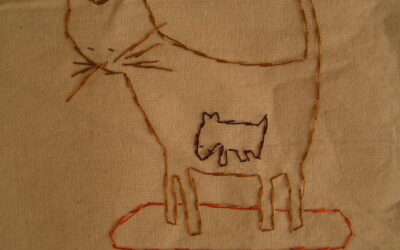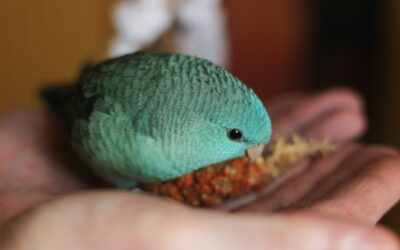When it comes to trimming nails, it might seem like a daunting task, but it’s an essential part of keeping your furry friend healthy and comfortable. Long nails can lead to discomfort, impact your dog’s gait, and even cause health issues in the long run. With the right tools, techniques, and plenty of patience, you can turn nail trimming into a positive experience for both you and your pet.
This guide will equip you with step-by-step instructions on how to cut dog nails safely and effectively. Whether you’re a pet owner trying this for the first time or an experienced groomer looking for a refresher, this resource has everything you need—from tools and techniques to troubleshooting tips.

Why Nail Care is Important for Dogs
Regular nail trimming is an essential aspect of maintaining your dog’s overall health and well-being. Here are several reasons why it is important to make nail trimming a routine part of your dog’s care:
- Comfort and Mobility: Overgrown nails can cause discomfort and pain for your furry friend. When nails become too long, they can curl and press into the paw pads, leading to inflammation, difficulty walking, and even changes in gait. Keeping your dog’s nails trimmed helps maintain their comfort and mobility.
- Preventing Injuries: Long nails are more prone to snagging and breaking, which can result in injuries. Additionally, when nails are too long, they can interfere with your dog’s natural grip and traction, increasing the risk of slips, falls, and joint strain. Regular trimming helps prevent these accidents and injuries.
- Maintaining Healthy Feet: Proper nail length promotes optimal foot health. When nails are excessively long, they can put pressure on the toes and alter the alignment of the foot. This can lead to structural issues and contribute to conditions like splayed toes or even arthritis. Trimming your dog’s nails helps preserve the natural alignment and function of their feet.
- Preventing Damage to Surfaces: Long nails can scratch and damage floors, furniture, and other surfaces. Regular trimming reduces the risk of accidental scratches or gouges, helping to maintain a harmonious living environment for both your dog and yourself.
By incorporating regular nail trimming into your dog’s grooming routine, you are not only ensuring their comfort and mobility but also promoting their overall health and preventing potential injuries. Remember, if you are unsure or uncomfortable with trimming your dog’s nails yourself, seek assistance from a professional groomer or veterinarian who can safely and efficiently trim them for you.

Tools You’ll Need for Dog Nail Trimming
Before you start, gather the right tools to make the experience easier and safer:
- Dog Nail Clippers: There are different options, such as guillotine-style clippers and scissor-style clippers. Choose one that fits your hand comfortably and is appropriate for your dog’s size.
- Styptic Powder: This helps stop the bleeding in case you accidentally trim into the sensitive area (the nail bed).
- Dog Treats: Use them for positive reinforcement and to create a positive association with nail trimming.
- Good Lighting: This is especially important for dogs with dark nails, as it’s harder to see the sensitive pink area known as the “quick.”
- Nail File: This can help to smooth sharp edges after trimming.
- Optional: Towel or Blanket to keep your dog calm and secure.
Tip: For larger dogs or pets with lots of hair around their legs or paws, you might need scissors to trim excess fur before starting the nail care routine.

Top Dog Nail Clippers and Products for Easy and Safe Trimming
Keeping your dog’s nails properly trimmed is essential for their health and comfort. Here are six top dog nail products and brands to help you achieve easy and safe nail trimming at home:
Dremel 7300-PT Dog Nail Grinder: This nail grinder offers a convenient and stress-free way to trim your dog’s nails. Its variable speed settings and gentle grinding action make it suitable for dogs of all sizes. Purchase here
Safari Professional Stainless Steel Nail Trimmer: These high-quality nail trimmers feature sharp, stainless steel blades and comfortable handles to ensure precise and swift nail trimming. Purchase here
Boshel Dog Nail Clippers and Trimmer: Designed with safety and ease of use in mind, these clippers have a built-in safety guard to prevent overcutting and a comfortable grip for better control. Purchase here
Hertzko Electric Pet Nail Grinder: This electric grinder offers a quiet and efficient way to trim your dog’s nails. It features a diamond bit grinder, three size ports, and a rechargeable battery for convenience. Purchase here
Mikki Dog Nail Clippers: These sturdy and reliable clippers have sharp stainless steel blades and an ergonomic handle for comfortable handling. They also come with a safety stop to prevent accidental cutting. Purchase here
Epica Professional Pet Nail Clipper: Made from high-quality stainless steel, these clippers offer durability and precision. The non-slip grip and safety lock ensure safe and hassle-free nail trimming. Purchase here
When choosing a dog nail product, consider your dog’s size, comfort, and your own ease of use. Remember to follow the instructions provided by the manufacturer for the best and safest results.

A Step-by-Step Guide to Trimming Dog Nails
1. Get Your Dog Comfortable
Start by preparing your dog for the process. Choose a quiet space and help them relax by using a calm tone and gentle handling. If they’re new to getting their nails trimmed, spend a few sessions gradually working on getting them used to the clippers and handling of their feet.
Quick Tips for a Calm Dog:
Use plenty of positive reinforcement with verbal praise and treats.
Start small— even trimming just one nail at a time helps your dog build confidence.
Hold your dog’s paw gently but firmly to ensure they feel secure.
2. Inspect the Nails
For dogs with light-colored nails, you’ll notice a pink area called the quick. This is where the blood vessels and nerves are, and you should avoid cutting into this area.
For dark nails, the quick isn’t visible, so aim to trim only the very tip of the nail. You can use a small flashlight or headlamp for extra visibility.
If your dog’s nails are extra long, clip them a little bit at a time over a few weeks to avoid accidentally cutting into the quick.
3. Clip the Nails
Start with one or two nails to build patience if your dog isn’t accustomed to the process.
Hold the clippers at a slight angle and trim the nails’ tips one at a time. Avoid applying excessive pressure as this could cause discomfort.
Listen carefully. If you hear the sound of nails clicking on hard floors after trimming, you may need to take a bit more off.
Tip for Success:
When using guillotine-style clippers, ensure they’re sharp to avoid crushing the nail. Dull clippers increase the risk of injury.
4. File and Smooth the Edges
Gently file the nails with a smooth nail file to remove sharp edges. This helps prevent scratches to floors and people and feels better for your dog.
5. Reward and Repeat
After trimming, give your dog a treat and plenty of praise. This creates a positive association with the process, making future nail trims easier.
Repeat the trimming process every 3-4 weeks, depending on how fast your dog’s nails grow. Consistency promotes better results and helps your dog grow more comfortable with regular trimming.
Troubleshooting Common Challenges
While regular nail trimming is essential for your dog’s well-being, it can sometimes be challenging. Here are some common challenges you may encounter during the nail trimming process and how to troubleshoot them:
Resistance and Fear: Some dogs may resist or become fearful during nail trimming. This can make the process stressful for both you and your dog.
To alleviate fear and resistance, gradually introduce your dog to the nail trimming routine from a young age. Use positive reinforcement, such as treats and praise, to associate nail trimming with positive experiences. Take it slow, be patient, and offer breaks if needed.
Nail Bleeding: Accidentally cutting the quick, the blood vessel inside the nail, can result in bleeding. This can be a common occurrence, especially if your dog has dark-colored nails, making it difficult to see the quick.
If bleeding occurs, apply styptic powder or cornstarch to the nail to help clot the blood. If bleeding persists or you’re unsure how to handle it, consult your veterinarian for guidance.
Difficulty Handling Paws: Some dogs may be resistant to having their paws handled, making it challenging to trim their nails. Start by getting your dog comfortable with having their paws touched and gently massaged.
Gradually introduce the nail clippers or grinder, allowing your dog to become familiar with the tool before attempting to trim their nails. If necessary, seek the assistance of a professional groomer or veterinarian who can help with desensitization and nail trimming.
Uncooperative Behavior: Dogs that are uncooperative or overly anxious during nail trimming may require additional support. Consider using calming techniques, such as playing soothing music or using anxiety-reducing products like pheromone sprays or wraps.
If your dog‘s anxiety persists, consult with a professional dog trainer or behaviorist for guidance on behavior modification techniques.
Remember, patience, positive reinforcement, and a calm environment are key when troubleshooting these challenges. By addressing these common issues, you can ensure a safe and stress-free nail trimming experience for both you and your furry friend.

Pro Tips for Successful Nail Trimming
- Small Sessions: Don’t feel pressured to do all the nails at once. Start small, focusing on a few nails per day if needed.
- Consistency: Schedule regular trimming sessions every few weeks to maintain a healthy length.
- Prepare for Long Nails: If your dog’s nails are too long, gradually work up to the correct length to avoid harming the quick.
- Stay Positive: Use dog treats and positive reinforcement throughout the process to reduce anxiety and build trust.
Over time, trimming your dog’s nails will become part of their routine, leading to healthier toes, happier paws, and less stress for both of you.
Kate’s K9 Pet Care Services provides dog nail trims for $15! We offer multiple other services. Contact us today!

Keep Those Paws Healthy | How To Cut Dog Nails
Trimming your dog’s nails doesn’t have to be stressful. With the right tools, plenty of patience, and lots of positive reinforcement, you can confidently manage your dog’s nail care at home. Remember, healthy nails mean a happier and more comfortable pup!
And if you’re not ready to tackle nail trims on your own, no problem—your local groomer or veterinarian is always there to help.
Happy trimming!






